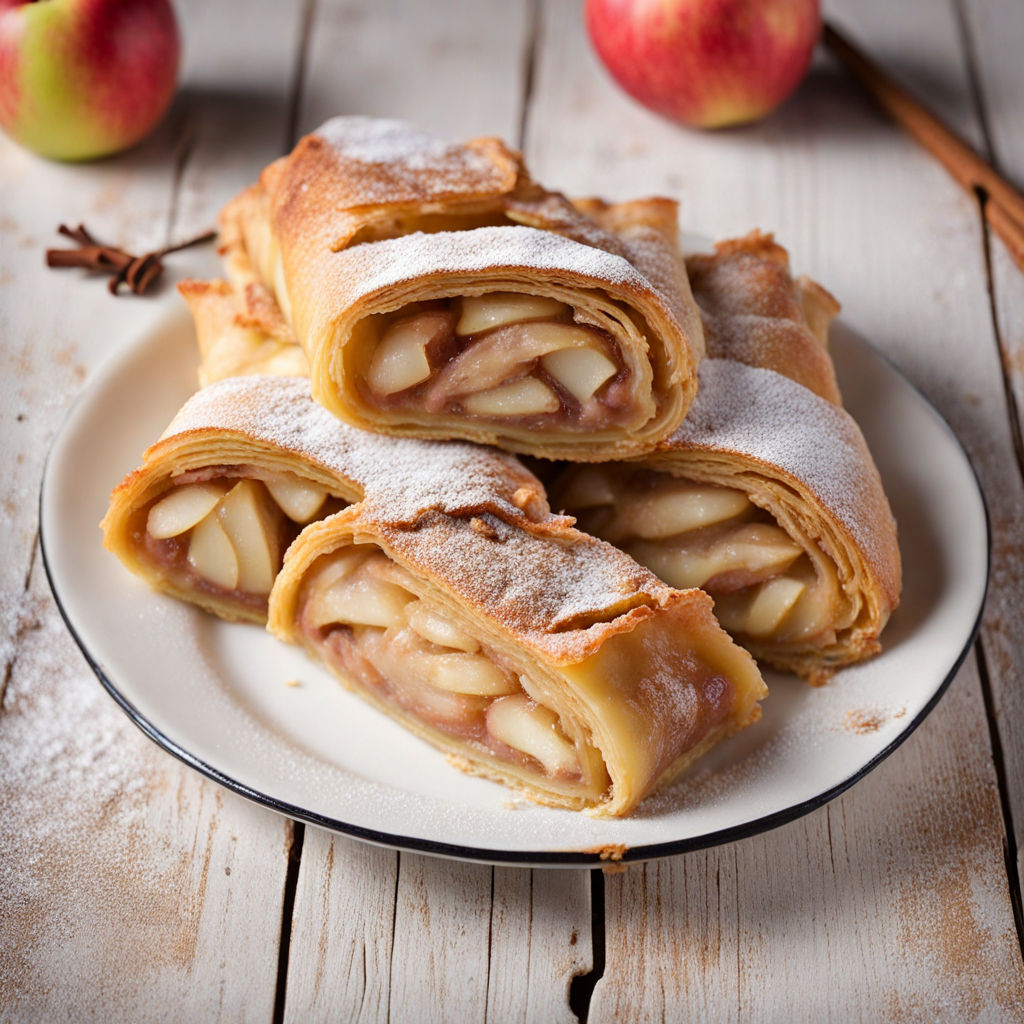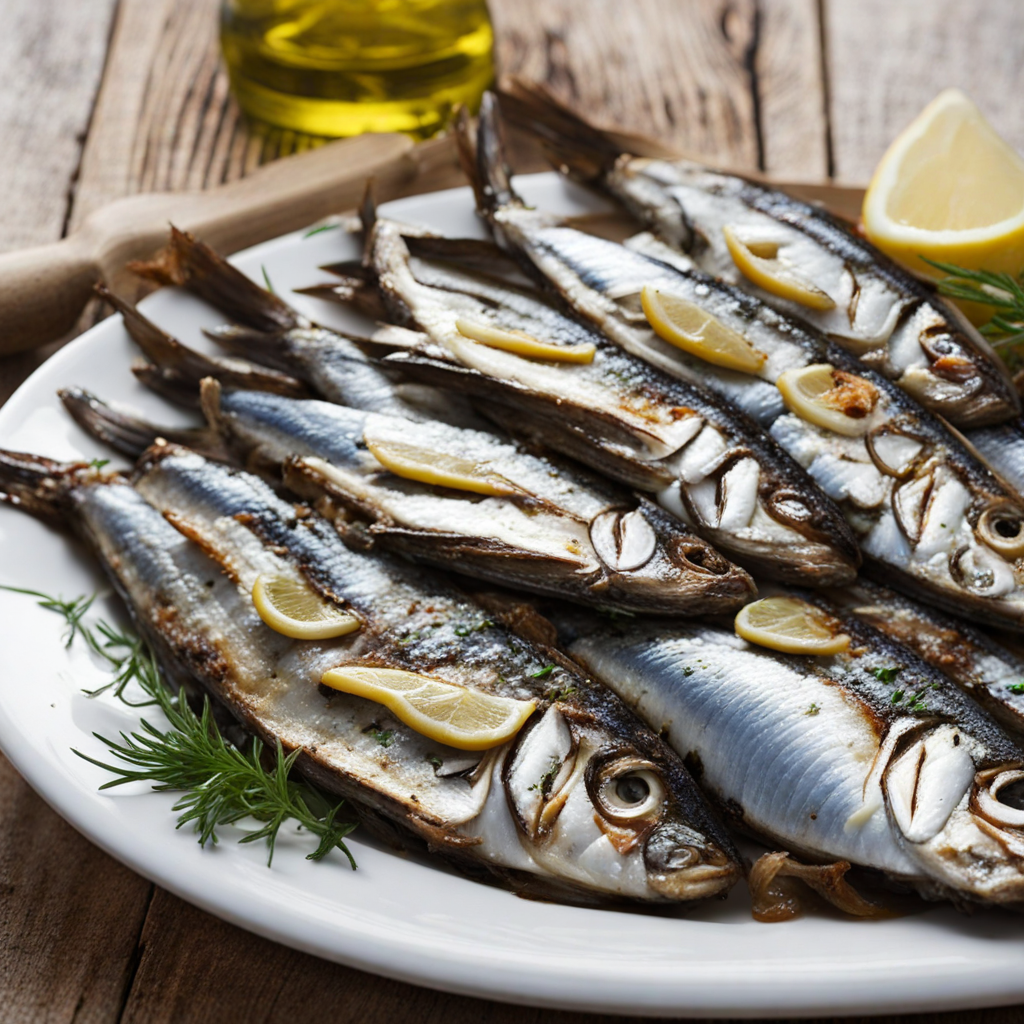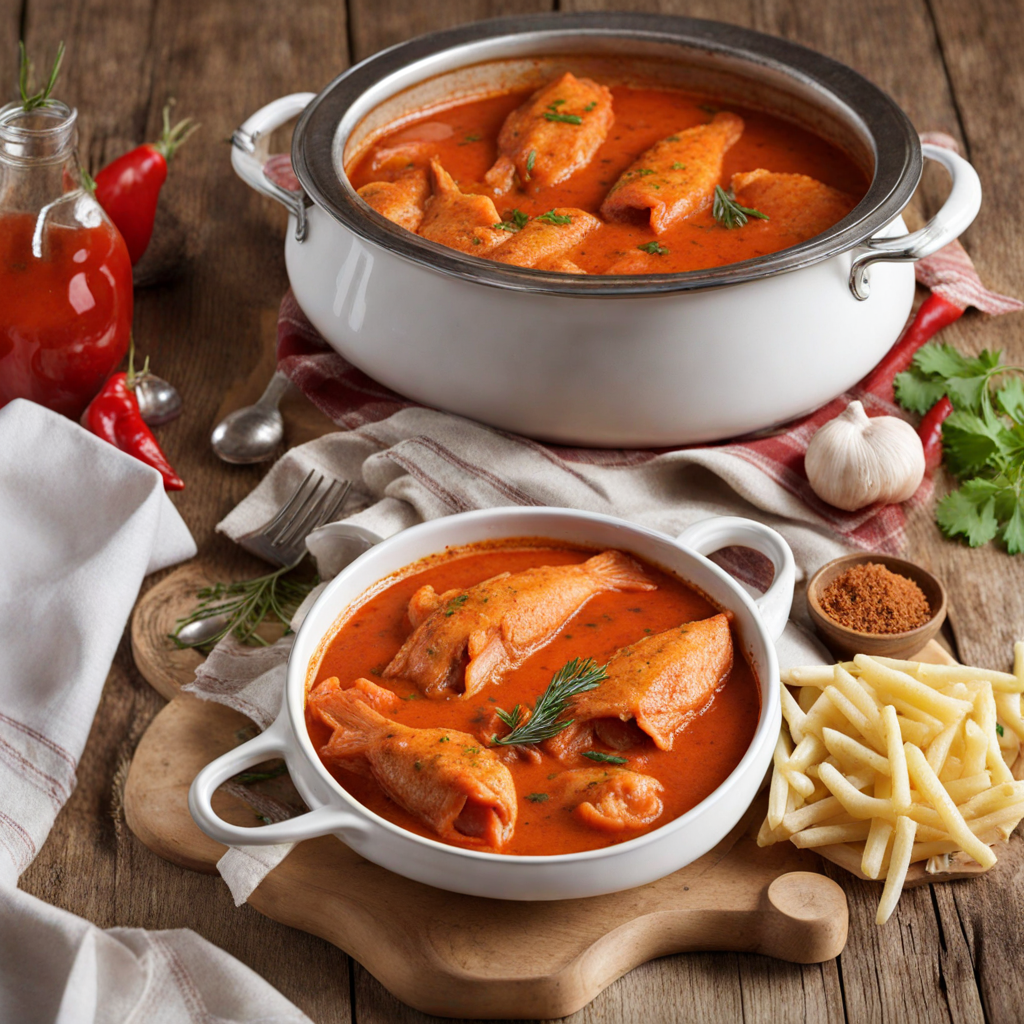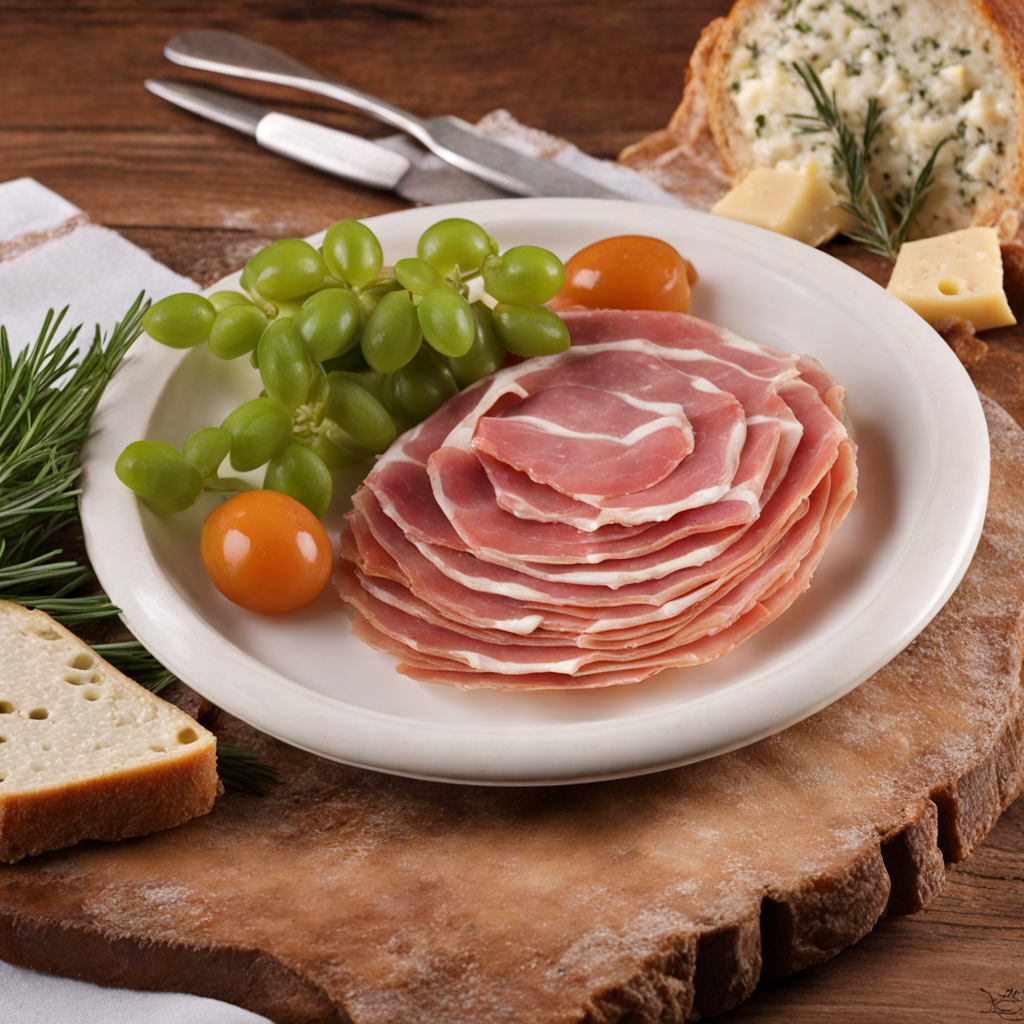Apple Strudel
Apple Strudel is a delightful pastry that hails from the rich culinary traditions of Croatia, showcasing a perfect blend of flavors and textures. At its core, this dessert features a delicate and flaky dough that encases a warm, spiced apple filling. The dough is typically made from simple ingredients like flour, water, and a pinch of salt, which are rolled out into thin layers, allowing for that signature lightness and crispness that contrasts beautifully with the tender apple filling. The strudel is often dusted with powdered sugar before serving, adding a touch of sweetness and visual appeal. The filling is where the magic truly happens, as it usually consists of tart apples mixed with sugar, cinnamon, and sometimes raisins or nuts for added depth and texture. The combination of sweet and tart flavors, coupled with the warm, aromatic spices, creates a comforting dessert that perfectly encapsulates the essence of Croatian home cooking. Each bite offers a delightful balance of flavors, with the juicy apples melting in your mouth while the spices linger on your palate, making it a truly memorable experience. Served warm, Apple Strudel is often accompanied by a dollop of whipped cream or a scoop of vanilla ice cream, enhancing its rich flavors and providing a creamy contrast to the flaky pastry. This beloved dessert is not only a staple in Croatian households but also a favorite among visitors seeking to embrace the country's culinary heritage. Whether enjoyed at a local café or crafted in the comfort of your own kitchen, Apple Strudel is a delicious invitation to explore the sweet side of Croatia's gastronomic landscape.
How It Became This Dish
The History of Jabučni Štrudel: A Croatian Culinary Delight Jabučni štrudel, or apple strudel, is a beloved pastry that has woven itself into the culinary fabric of Croatia, particularly in the northern regions like Slavonia and the Istrian Peninsula. While its roots can be traced back to the Austro-Hungarian Empire, the evolution of this dish in Croatia tells a story of cultural exchange, regional adaptation, and the celebration of local ingredients. #### Origins: A Cross-Cultural Journey The history of jabučni štrudel is closely linked to the broader narrative of strudel itself, which is believed to have originated in the 17th century in the kitchens of the Austro-Hungarian Empire. The dish is thought to have been inspired by the Middle Eastern baklava, with its layered pastry and sweet fillings. However, the strudel as we know it today began to take shape in Vienna, where culinary innovation was flourishing. The word "strudel" is derived from the German word for "whirlpool" or "eddy," which aptly describes the swirling layers of dough encasing the filling. The traditional strudel dough is a thin, stretchy pastry that is rolled out to a near-translucent thickness, allowing for an impressive number of layers. The filling, historically made with apples, sugar, cinnamon, raisins, and occasionally nuts, is then rolled into the dough and baked until golden and flaky. As the Austro-Hungarian Empire expanded, so too did the popularity of strudel. It made its way into the regions of Central and Eastern Europe, where it was adapted to local tastes and ingredients. In Croatia, particularly in the areas influenced by the empire, the pastry began to take root, with jabučni štrudel emerging as a particularly favored version. #### Cultural Significance: More Than Just a Dessert In Croatia, jabučni štrudel is more than just a dessert; it embodies the spirit of family gatherings, celebrations, and the changing of seasons. Apples, which are often harvested in late summer and early fall, serve as a seasonal symbol of abundance and the fruit's versatility makes it a staple in Croatian households. As families gather to celebrate harvest festivals or holidays, jabučni štrudel becomes a centerpiece of the festivities, evoking feelings of nostalgia and togetherness. The preparation of jabučni štrudel is often an intergenerational affair. Grandmothers pass down their recipes, teaching younger generations the art of making the perfect dough and filling. This process not only preserves culinary traditions but also strengthens familial bonds. The act of rolling out the dough, layering the filling, and baking together creates lasting memories that are cherished for years to come. In Croatian culture, food is a way of expressing love and care. Jabučni štrudel encapsulates this sentiment; it is often made with the intention of sharing. Whether served at a festive gathering or brought as a gift to a neighbor, this pastry symbolizes hospitality and generosity. #### Development Over Time: Regional Variations and Modern Adaptations As jabučni štrudel became more established in Croatian cuisine, regional variations began to emerge. Each area would put its unique spin on the classic recipe, often incorporating local ingredients or culinary techniques. In Slavonia, for instance, the addition of nuts or a splash of brandy into the filling is a common twist, reflecting the region's rich agricultural background and the availability of these ingredients. In Istria, the use of citrus zest, such as lemon or orange, adds a refreshing layer of flavor that distinguishes the local version. Meanwhile, in coastal areas, the influence of Mediterranean cuisine can be felt, leading to the occasional inclusion of figs or other dried fruits alongside the traditional apple filling. In recent years, the global trend towards health-conscious eating has also influenced the preparation of jabučni štrudel. Bakers have begun experimenting with whole grain flours, reduced sugar, and alternative sweeteners, while still striving to maintain the integrity of the original recipe. Vegan versions have also emerged, using plant-based substitutes for butter and eggs, making this beloved dish accessible to a wider audience. The globalization of cuisine has also brought jabučni štrudel to international attention. Croatian expatriates and culinary enthusiasts have introduced the dish to various parts of the world, often participating in food festivals or cultural events that showcase Croatian gastronomy. As a result, jabučni štrudel has gained recognition beyond its homeland, celebrated not only for its delightful taste but also as a symbol of Croatian heritage. #### Jabučni Štrudel Today: A Culinary Icon Today, jabučni štrudel stands as a testament to the rich culinary heritage of Croatia. It is featured on menus in traditional konobas (taverns) and upscale restaurants alike, demonstrating its versatility and enduring appeal. Home cooks continue to cherish the recipe, often adding their personal touch to create a unique family version. The recipe for jabučni štrudel has also found its place in contemporary Croatian cookbooks, celebrated not only as a dessert but also as an expression of cultural identity. Food festivals across Croatia often include strudel competitions, where bakers showcase their skills and creativity, reinforcing its status as a culinary icon. In the face of modern challenges, the art of making jabučni štrudel is still very much alive. Culinary workshops and classes dedicated to traditional Croatian cooking have become popular, ensuring that the skills and recipes that have been passed down through generations will not be lost. Young chefs and home bakers alike are eager to learn the time-honored techniques of strudel-making, keeping the spirit of this iconic dish vibrant and relevant. #### Conclusion: A Delicious Legacy Jabučni štrudel is more than just a delightful pastry; it is a reflection of Croatia's rich history, cultural diversity, and the enduring bonds of family and community. As it continues to evolve and adapt, this dish serves as a delicious legacy that connects the past with the present. Whether enjoyed in a rustic kitchen in Slavonia, at a modern café in Zagreb, or shared among friends and family anywhere in the world, jabučni štrudel remains a cherished symbol of Croatian culinary heritage, inviting everyone to savor a piece of tradition.
You may like
Discover local flavors from Croatia







